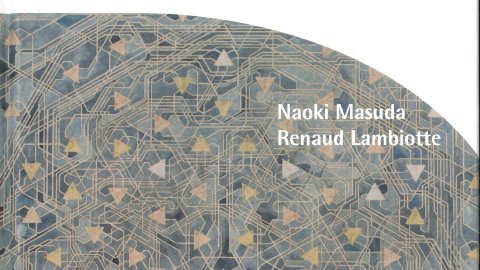Analysis of discontinuous Galerkin methods for anti-diffusive fractional equations
Abstract
We consider numerical methods for solving time dependent partial differential equations with convection-diffusion terms and anti-diffusive fractional operator of order $\alpha \in (1,2)$. These equations are motivated by two distinct applications: a dune morphodynamics model and a signal filtering method.
We propose numerical schemes based on local discontinuous Galerkin methods to approximate the solutions of these equations. Numerical stability and convergence of these schemes are investigated.
Finally numerical experiments are given to illustrate qualitative behaviors of solutions for both applications and to confirme the convergence results.
Systems and fluid dynamic modelling for bio-inspired propulsion
Structural and functional redundancy in biological networks
Abstract
Several scholars of evolutionary biology have suggested that functional redundancy (also known as "biological degener-
acy") is important for robustness of biological networks. Structural redundancy indicates the existence of structurally
similar subsystems that can perform the same function. Functional redundancy indicates the existence of structurally
di erent subsystems that can perform the same function. For networks with Ornstein--Uhlenbeck dynamics, Tononi et al.
[Proc. Natl. Acad. Sci. U.S.A. 96, 3257{3262 (1999)] proposed measures of structural and functional redundancy that are
based on mutual information between subnetworks. For a network of n vertices, an exact computation of these quantities
requires O(n!) time. We derive expansions for these measures that one can compute in O(n3) time. We use the expan-
sions to compare the contributions of di erent types of motifs to a network's functional redundancy.
Six-dimensional S-matrices from Rational Maps
Abstract
In this talk, we will discuss some recent progress on the study of six-dimensional S-matrices as well as their applications. Six-dimensional theories we are interested include the world-volume theories of single probe M5-brane and D5-brane, as well as 6D super Yang-Mills and supergravity. We will present twistor-string-like formulas for all these theories, analogue to that of Witten’s twistor string formulation for 4D N=4 SYM.
As the applications, from the 6D results we also deduce new formulas for scattering amplitudes of theories in lower dimensions, such as SYM and supergravity in five dimensions, and 4D N=4 SYM on the Columbo branch.
The number of quartic D4-fields with monogenic cubic resolvent ordered by conductor
Abstract
It is an old problem in number theory to count number fields of a fixed degree and having a fixed Galois group for its Galois closure, ordered by their absolute discriminant, say. In this talk, I shall discuss some background of this problem, and then report a recent work with Stanley Xiao. In our paper, we considered quartic $D_4$-fields whose ring of integers has a certain nice algebraic property, and we counted such fields by their conductor.
Self-similarity in boundary layers
Abstract
Boundary layers control the transport of momentum, heat, solutes and other quantities between walls and the bulk of a flow. The Prandtl-Blasius boundary layer was the first quantitative example of a flow profile near a wall and could be derived by an asymptotic expansion of the Navier-Stokes equation. For higher flow speeds we have scaling arguments and models, but no derivation from the Navier-Stokes equation. The analysis of exact coherent structures in plane Couette flow reveals ingredients of such a more rigorous description of boundary layers. I will describe how exact coherent structures can be scaled to obtain self-similar structures on ever smaller scales as the Reynolds number increases.
A quasilinear approximation allows to combine the structures self-consistently to form boundary layers. Going beyond the quasilinear approximation will then open up new approaches for controlling and manipulating boundary layers.
Scalable Least-Squares Minimisation for Bundle Adjustment Problem
Abstract
Structure from Motion (SfM) is a problem which asks: given photos of an object from different angles, can we reconstruct the object in 3D? This problem is important in computer vision, with applications including urban planning and autonomous navigation. A key part of SfM is bundle adjustment, where initial estimates of 3D points and camera locations are refined to match the images. This results in a high-dimensional nonlinear least-squares problem, which is typically solved using the Gauss-Newton method. In this talk, I will discuss how dimensionality reduction methods such as block coordinates and randomised sketching can be used to improve the scalability of Gauss-Newton for bundle adjustment problems.


